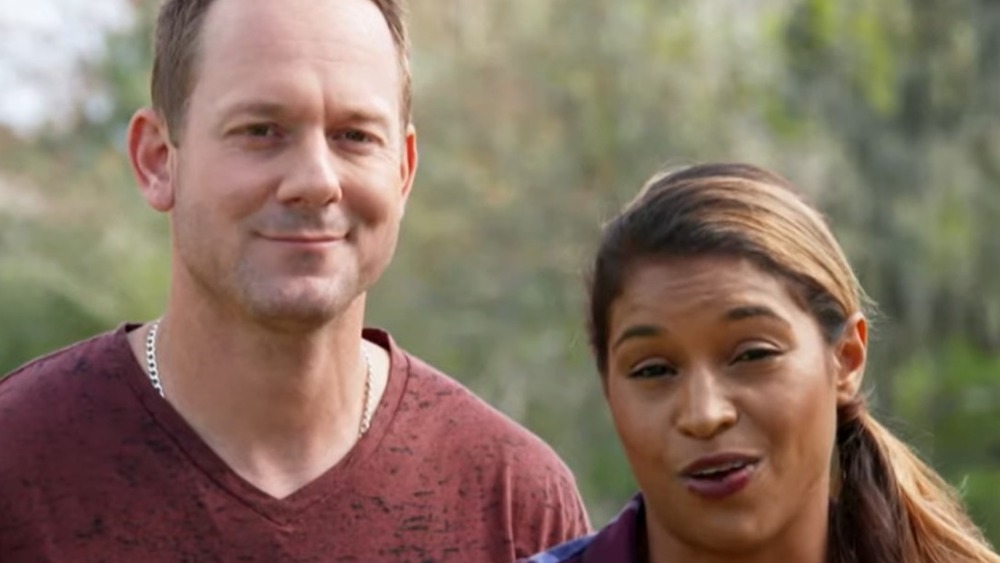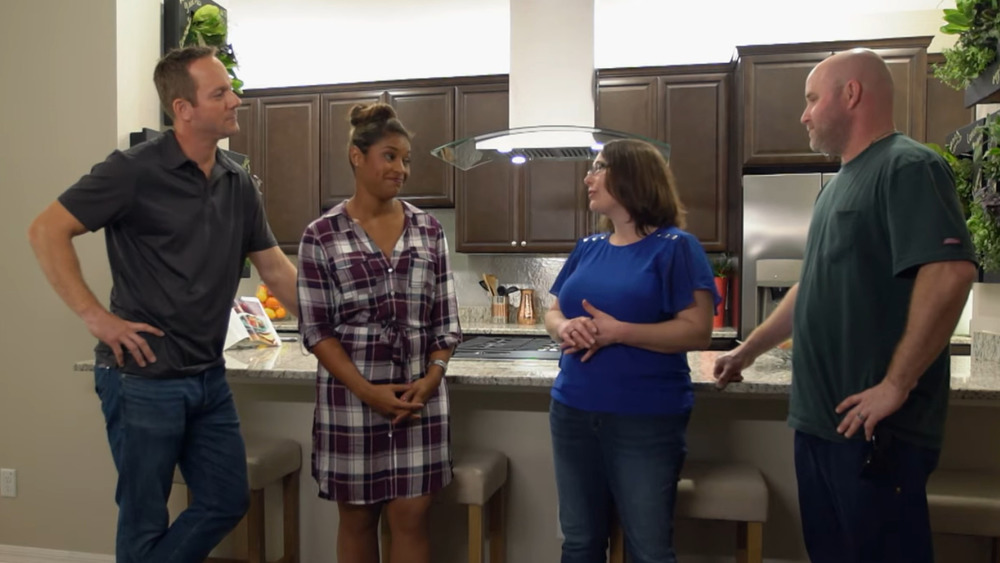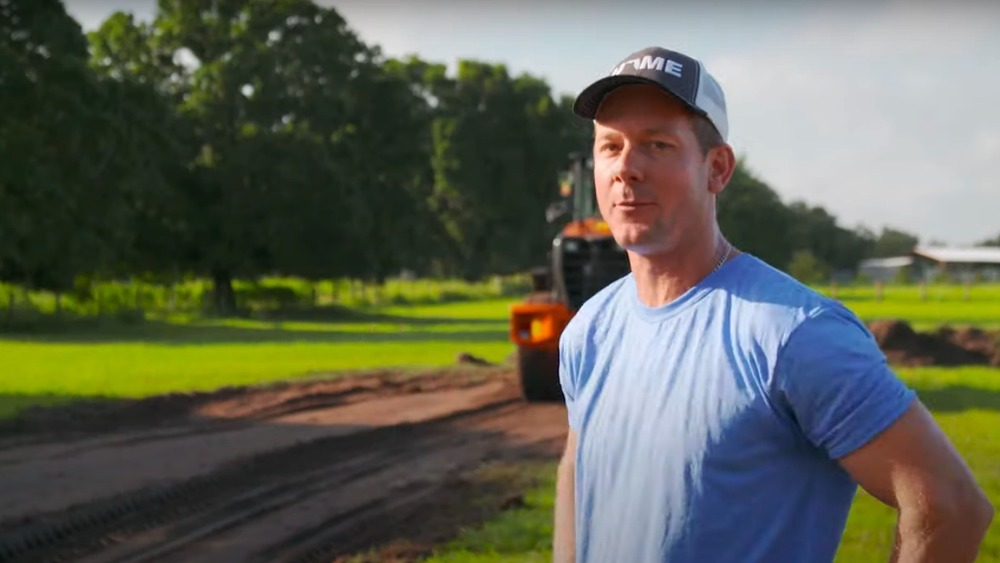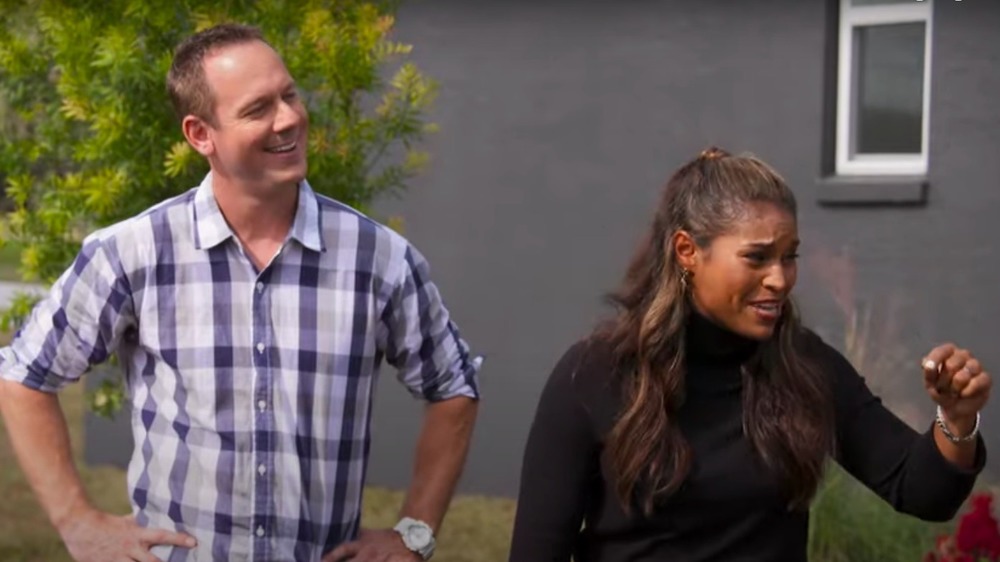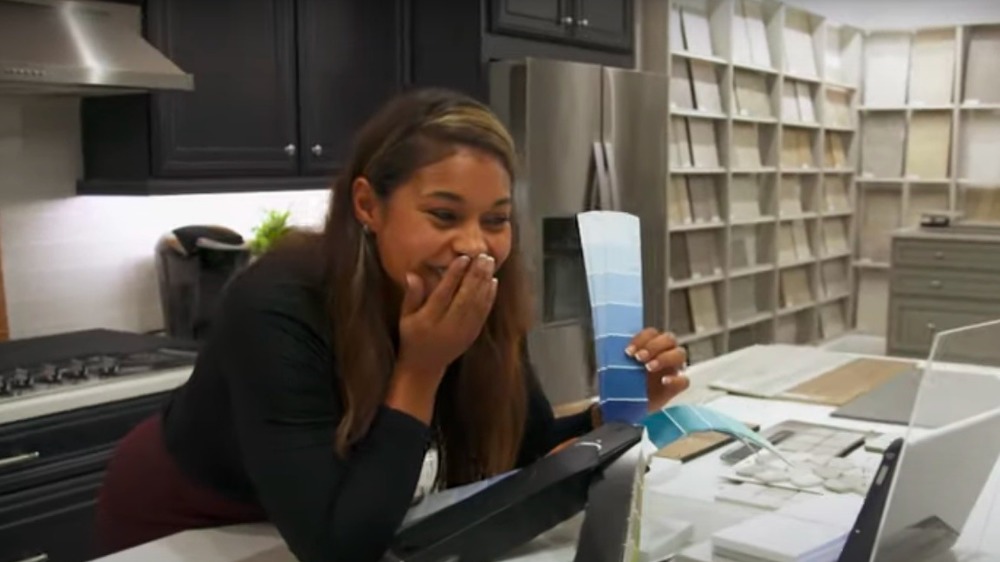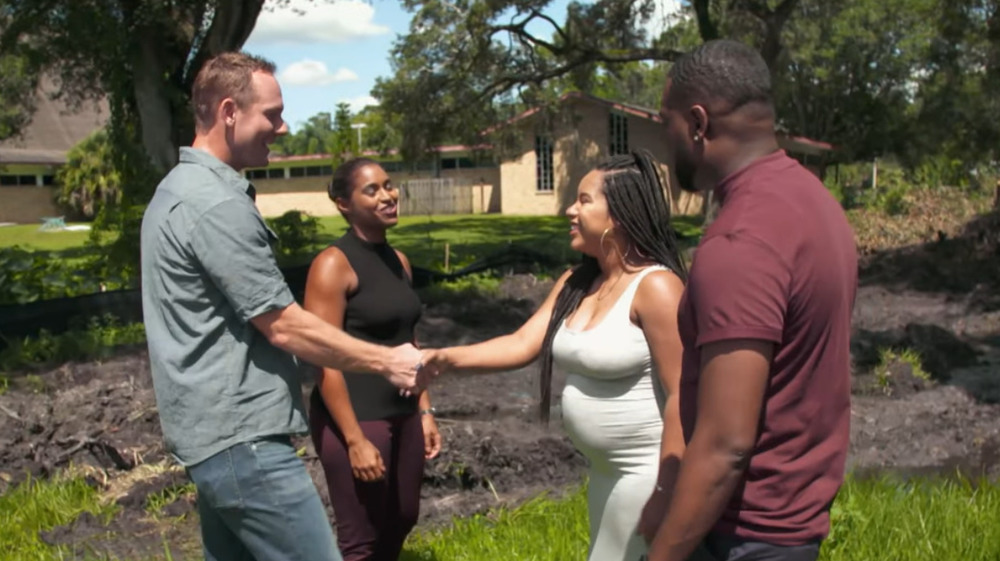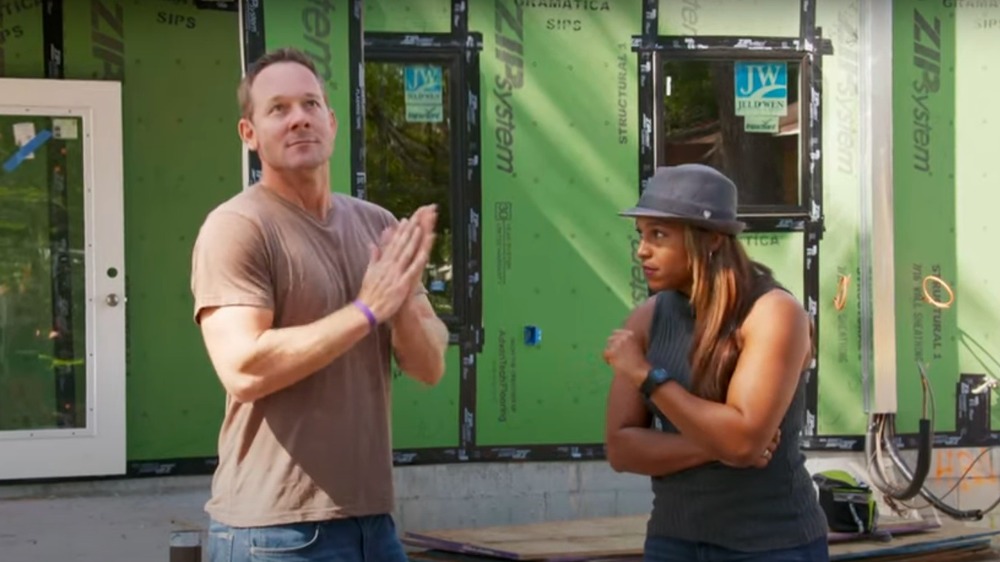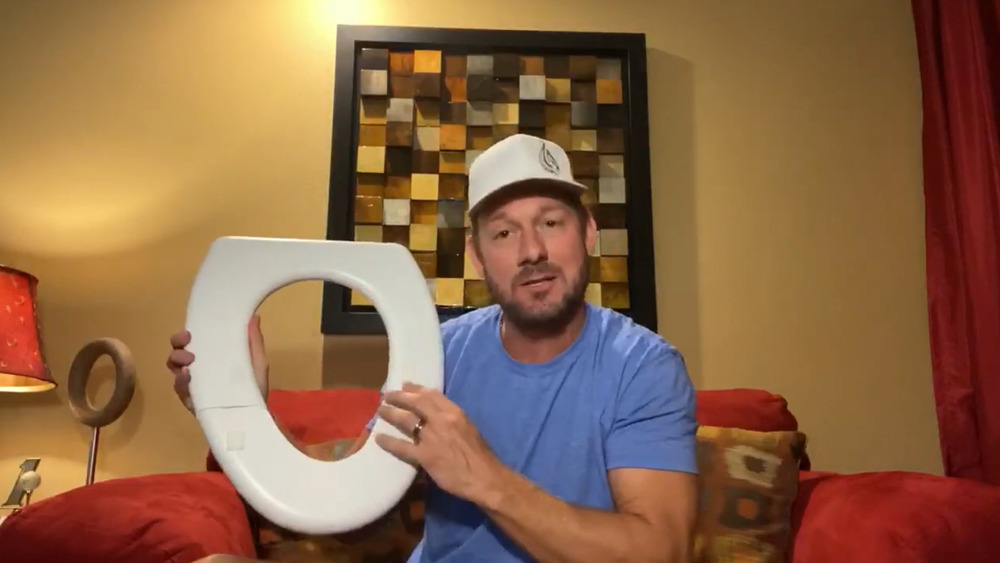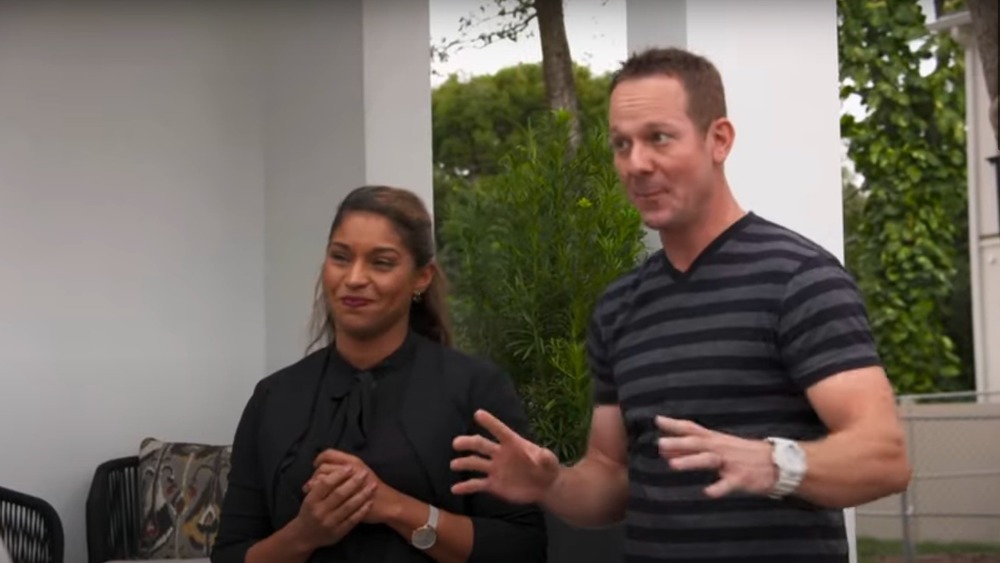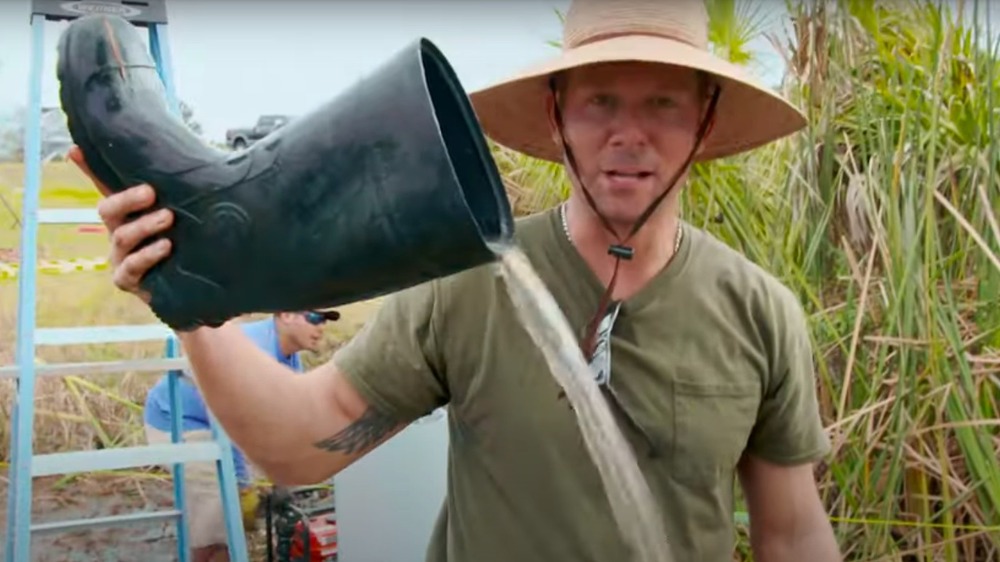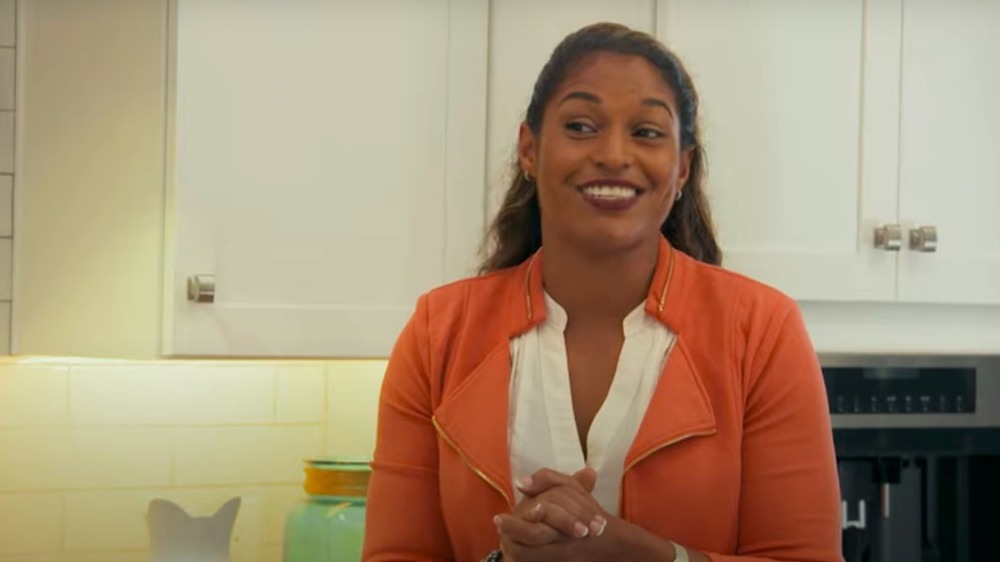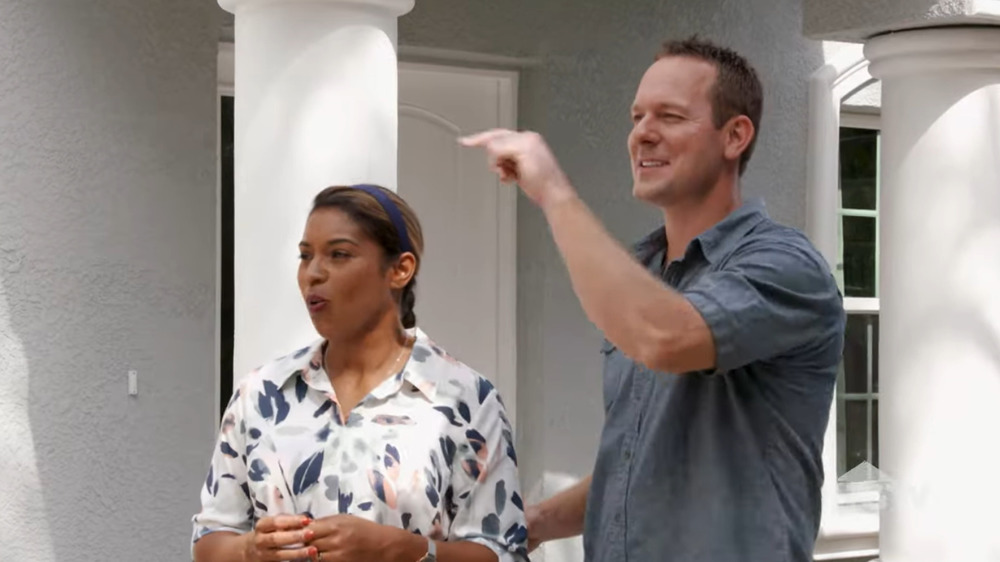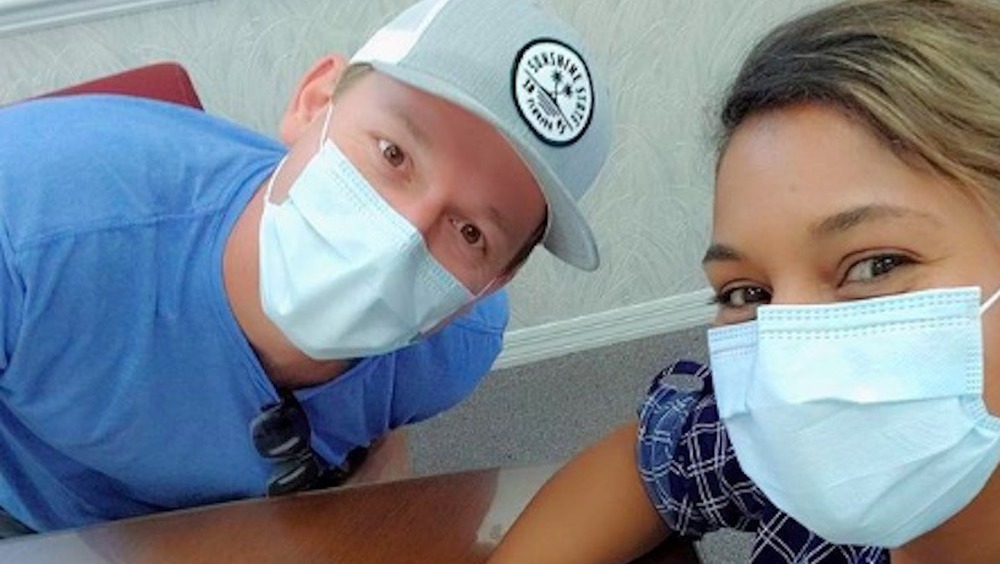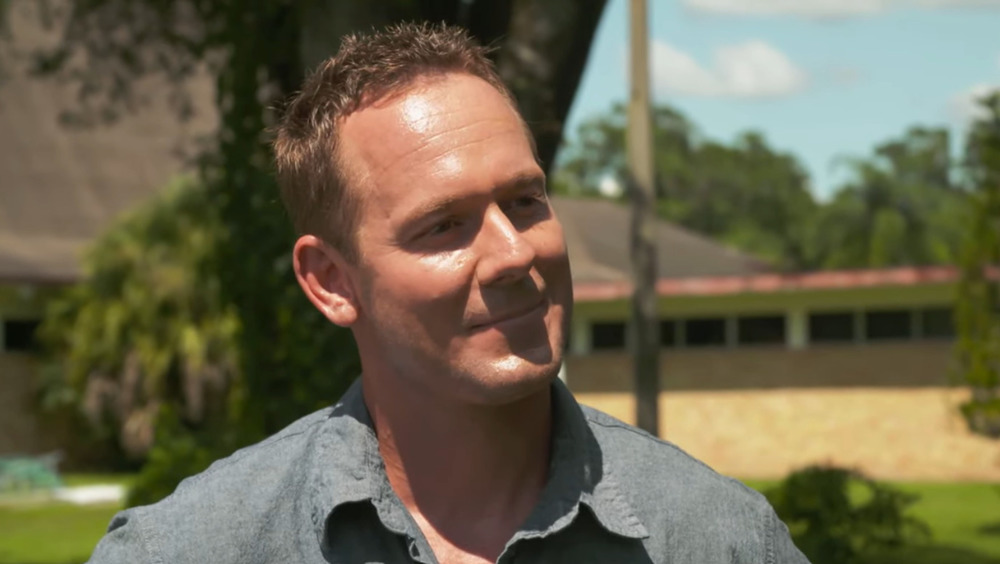The Untold Truth Of 100 Day Dream Home
In 2019, HGTV launched 100 Day Dream Home, a show with a somewhat different premise from the network's typical lineup of hit shows, such as Love It or List It, Windy City Rehab, and Fixer Upper, which is to follow the process of an existing home being renovated.
The show focuses on the husband-and-wife team of Brian and Mika Kleinschmidt. According to HGTV's description, each episode documents their efforts as they undertake the daunting task of "designing and building a completely custom home from the ground up in 100 days or less" after meeting extensively with the home's future owners in order to gain a sense of their likes and dislikes. "We say OK, [let's] take all the elements that you do like in these houses, put them all together in one and build you exactly what you want and that's their dream home," Brian told WFTS of the series' premise.
With 14 million viewers tuning in for the show's freshman season, it's clear that the Kleinschmidts have found an audience. To find out even more about this HGTV hit, read on to discover the untold truth of 100 Day Dream Home.
100 Day Dream Home was originally titled 90 Day Dream Home
Prior to becoming HGTV personalities with the launch of 100 Day Dream Home, Brian and Mika Kleinschmidt were building spec homes in Tampa through their company Dirt 2 Design. And while the show's 100-day time limit may appear challenging, the couple had actually been able to build homes in far less time than that. According to a profile in the Tampa Bay Times, they'd once managed to construct an entire house, from start to finish, in just 63 days.
Interestingly enough, when the pilot for the series first aired, it had a different title, 90 Day Dream Home. As the title suggests, the timeline was different – HGTV's synopsis of the series' debut described the Kleinschmidts building a "dream home" for their "newlywed clients," noting that "they will get it built in 90 days or less!"
In 2019 features about the show's launch, as reported by WFTS, the show is likewise delineated as 90 Day Dream Home. Apparently, production realized that it was best to play it safe and go with 100 Day Dream Home instead.
The idea for 100 Day Dream Home came to the Kleinschmidts from watching HGTV
When they weren't busy building spec homes, Brian and Mika Kleinschmidt of HGTV's 100 Day Dream Home were apparently watching HGTV. As they revealed in an interview with the Tampa Bay Times, viewing the network's various offerings ultimately led them to realize that what they were doing would make a great show. They also figured that it would be a distinctive addition to HGTV's existing roster of programming — while most HGTV offerings featured some type of renovation or redesign project, the Kleinschmidts envisioned a series with a different premise, in which they'd build customized homes from the ground up under a strict timeline.
As Brian Kleinschmidt told The Observer News, the wife of his former boss worked for HGTV. Having "risen through the ranks of production," she thought their concept had enough merit to get their idea to the right people, and 100 Day Dream Home was born.
Kleinschmidt also credits his own tenacity for 100 Day Dream Home ultimately making it on the air. "My motto in life is if someone tells you no, just take that 'no' as a 'not yet,'" he told The Observer News.
100 Day Dream Home's big twist adds extra suspense
While the premise of 100 Day Dream Home sets the show apart from HGTV's home-renovation series, another element that makes the show different is the surprise the homeowners receive in each episode. As Brian and Mika Kleinschmidt explained in an interview with People, they undertake a special project — ranging from a dedicated craft room to a tricked-out backyard — of which the homeowner is completely unaware.
Brian described the process that goes into brainstorming ideas for the show's special projects. "When we meet people, we get to know them very quickly," he said, adding that he and Mika "sometimes ... see eye-to-eye," though other times it requires "a little extra convincing."
When it's time for the big reveal, the homeowners not only see their new house for the first time, they also discover the secret project, while viewers find out whether they like what the Kleinschmidts have created. "There hasn't really been a time when they've hated it," Brian revealed to People. "Or at least they haven't said anything to us yet." Added Mika: "We feel pretty confident when we make those decisions that this is something that's going to enhance their life."
Mika Kleinschmidt of 100 Day Dream Home likes to "overprepare" homeowners
Brian and Mika Kleinschmidt have defined roles on 100 Day Dream Home. "Mika handles most of the design," Brian told the Los Angeles Times. "I handle most of the dirt." As a result, the HGTV website pointed out, this involves Mika bringing clients on a tour of various properties in order to learn their design and decor preferences. All those decisions need to be made within the first two weeks in order for construction to proceed and to meet the 100-day deadline. "I really like to overprepare people before the process starts," Mika explained in a video interview with People.
Taking clients on what the host dubbed an "interactive field trip," as Mika explained, is key to the process, because "it's one thing to see a picture online," but being able to walk through the space, "you're seeing the finishes, you can touch them... it just ties it all together." In fact, she revealed that the homeowners' initial "wish list" usually ends up being impacted by those visits. "By the end of this process when they walk to their home, a lot, like 60 percent of those things, have changed," she explained.
100 Day Dream Home clients don't get to see their homes until they're completed
Once the decisions have been made and the homeowners have signed off on the custom features they want to see in their new home, 100 Day Dream Home clients are then completely removed from the process. Not only are they not updated on the progress of construction, they're not even allowed to return to the property until it's time for the big reveal.
Not only does this add an element of drama to 100 Day Dream Home — will the homeowners love it or hate it? — there's another important reason why homeowners don't see their new abode until it's all finished. According to Brian Kleinschmidt, not having to deal with the homeowners during the building phase is a big part of why they've been able to meet the 100-day deadline stipulated in the show's title. "That's really what slows the process down," he said in an interview with the Tampa Bay Times, explaining that delays tend to happen when a client "comes in every two days and says change this and change that."
100 Day Dream Home's Brian and Mika Kleinschmidt have never missed a deadline
Watching Brian and Mika Kleinschmidt scramble to complete construction within the 100 Day Dream Home timeline adds an additional layer of drama to the show. As Brian told the University of Central Florida alumni magazine, UCF Alumni, they've become used to encountering "unexpected challenges" along the way, but that the weather causes the most damage to their timeline. "We can usually overcome minor hiccups in our timeline but when a hurricane or tropical storm comes through and delays us by a week, that timeline goes right out the window," he said.
While he admitted that pretty much each 100 Day Dream Home project "comes down to the wire," they pull out all the stops to "do whatever it takes" to ensure that construction is completed on time. "It's very stressful," he added, "but also very rewarding when we see the smiles and excitement on our clients' faces when they see their dream home for the first time."
While Brian did admit to the Los Angeles Times that the timeline might look different if he were building mansions, he said that when building a typical family home, "100 days or less should be doable for anybody."
100 Day Dream Home isn't Brian Kleinschmidt's first experience with television
Any viewers of 100 Day Dream Home who saw Brian Kleinschmidt on the show and thought he looked a little familiar can pat themselves on the back; his HGTV series may have provided his first starring role on television, but by no means is this his first time on the tube.
As the Orlando Sentinel reported, in 2015 Kleinschmidt appeared on ABC's entrepreneurial competition series Shark Tank, where he introduced a child potty seat that he dubbed EZPeeZ. "It was one of the coolest experiences I ever have been a part of," he said of pitching his invention to the show's "sharks."
That wasn't his only experience on network television. The year before, he and his then-wife, Ericka Dunlap, competed on the globe-trotting travel contest The Amazing Race. As the Herald-Tribune reported, the couple narrowly missed winning the entire season. "We made it all the way to the finish line," he said. "We had the lead pretty much the whole last episode, but we got caught up in one of the challenges and lost by about [seven] minutes."
The Kleinschmidts sometimes feel like "counselors" to their 100 Day Dream Home clients
On 100 Day Dream Home, Mika and Brian Kleinschmidt build custom homes for clients with very specific requests, and this means that they've had to adjust from building and selling spec homes — in which Mika would select the finishes she felt would create a home with wide appeal, which could then be sold for the highest amount they could command – to working directly with clients.
This change in focus has resulted in a very different process than what they'd been accustomed to. "Working with homeowners is a totally different angle," Mika told People. "You have to be a great listener ... when you get to those points where there's just a disagreement, they're not seeing eye to eye..."
For Mika, this adds an element of psychology that she's come to embrace. "It's almost like you're a counselor in a sense," she explained. "I mean, there's always gonna be a middle ground of compromise, and you just have to figure out what that is with that particular client."
100 Day Dream Home clients are skeptical that the Kleinschmidts can get the job done on time
While the 100-day construction deadline is built right into the title of 100 Day Dream Home, occasionally Mika and Brian Kleinschmidt encounter homeowners who scoff at the idea that their new home will be ready to move into at the end of that tight timeframe. "A lot of them don't think we can get it done; they're shocked that we hit the goal," Brian revealed in an interview with the Los Angeles Times.
According to Mika, one way they manage to meet the time constraints is by bringing in "three or four trades working at the same time so that we can knock things out quicker." And, as Brian pointed out, they'll also hire far more tradespeople than a normal job would require, in order to get each job done faster. "For drywall, rather than have three guys we'll have eight. We'll knock it out in a day, half a day," he explained. Despite the speed, he added, quality is a priority. "We're not just slapping these up for a TV show," he said. "We make sure they're perfect."
The Kleinschmidts of 100 Day Dream Home prioritize work-life balance
When it comes to creating the custom homes featured in 100 Day Dream Home, Mika and Brian Kleinschmidt try to stay as focused on the journey as they are on the destination.
As Brian told the Herald-Tribune, the couple tries to remind themselves "every day that this should be fun. We enjoy every step of the process, and as soon as we lose sight of that, we have to remember why we're doing it. It can become stressful, but we do love what we're doing."
That same philosophy also comes into play when they determine how much they work and how many homes to build. As the newspaper pointed out, the second season of 100 Day Dream Home featured nine of the 22 builds they completed that year. Even though the couple's business, Dirt 2 Design, has been in high demand, thanks to the success of their show, they have no plans to ramp things up. "We're not looking to build 500 houses a year," Mika admitted. "It's all about finding a good work-life balance."
HGTV doubled down on 100 Day Dream Home by ordering a second season
After the first season of 100 Day Dream Home aired on HGTV, the network decided that its viewers wanted to see more. In a press release issued in July 2020, HGTV pointed to the first season's strong ratings — more than 14 million viewers — in announcing that the show was being picked up for a second season. "Every day we keep the HGTV team focused on finding and cultivating expert personalities so that we can create shows that have a fresh twist," said HGTV president Jane Latman in the announcement, noting that the show had "attracted a significant number of viewers after just one season and that is a big win for the HGTV pipeline."
When returning to film episodes for the second season, 100 Day Dream Home stars Mika and Brian Kleinschmidt utilized the lessons they learned from their introductory season, particularly when it came to how they managed their time and how their new TV gig was impacting their existing business. "We've been good at delegating tasks," Mika told the Herald-Tribune. "We hired a project coordinator because if we're out filming, we're not answering the phones. We're building a team."
Why the Kleinschmidts don't wear masks in the 100 Day Dream Home episodes shot during the pandemic
As if designing and building made-to-order, fully customized homes within a 100-day time limit isn't enough of a challenge, the second season of 100 Day Dream Home also dealt with the coronavirus. When the pandemic hit, production of film and television projects across the board ground to a screeching halt, and that included shows airing on HGTV. When production on 100 Day Dream Home finally resumed in the summer of 2020, according to the Herald-Tribune, new safety protocols had been put in place that added extra complications.
One of these protocols required members of the crew to wear face masks. However, don't expect to see Brian and Mika Kleinschmidt masked up in any episodes; while social distancing and mask-wearing may have been taking place behind the scenes, these measures weren't being filmed for 100 Day Dream Home because "it would timestamp the episodes when they are reaired," Brian explained to the Herald-Tribune.
If there's a silver lining to the pandemic, Mika added, it's that people have come to realize that "home is more important than it ever has been."
This is why 100 Day Dream Home feels like Brian Kleinschmidt's "redemption"
Before he and wife Mika embarked on building spec homes — which ultimately led them to 100 Day Dream Home — Brian Kleinschmidt had an earlier experience with flipping houses. As he told UCF Alumni, that experience did not go well. "I lost nearly every penny I had flipping homes in Nashville back in 2008 when the housing market crashed," he explained.
In an interview with WFTS, Brian admitted that he was doing too much at a time when the economy had crashed, and that resulted in his losing money — and a lot of it. "I'm not even exaggerating, almost every penny I had and that little piece of life always felt like it defeated me," he said.
This is why, he continued, the subsequent success that he and Mika have experienced, with both their business and 100 Day Dream Home, has been so crucial. "So this show, what we're doing now with real estate is kind of like my redemption," he admitted to WFTS. "It just feels good to get that back."
